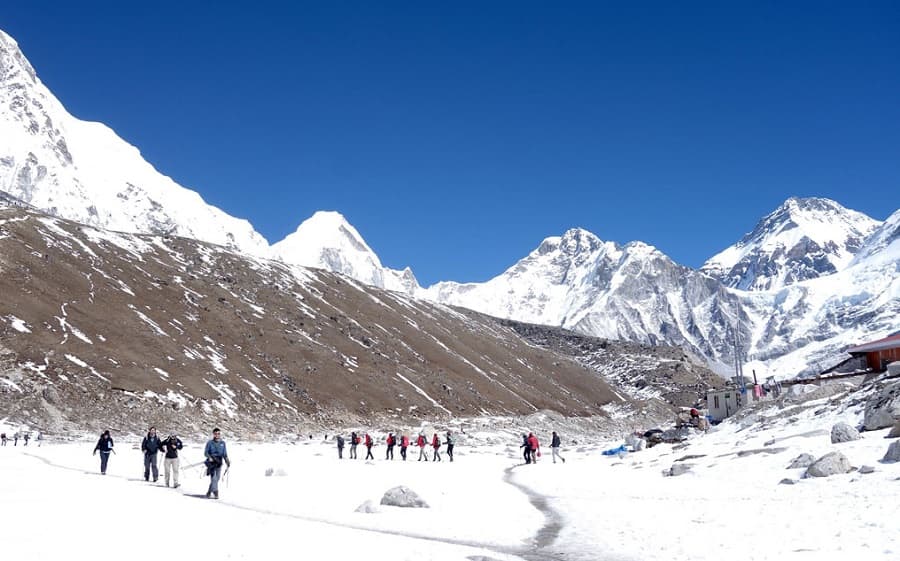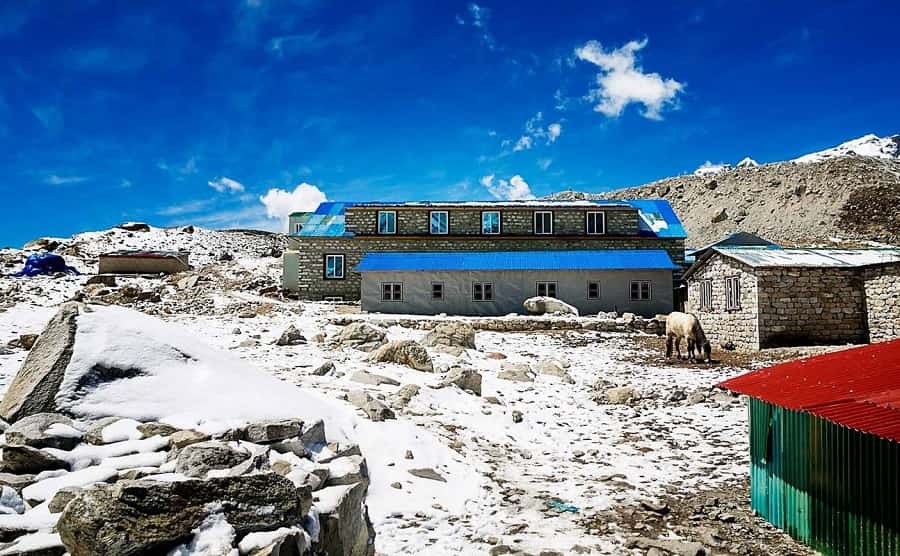The Ultimate Mount Everest Base Camp Trek Guide
Mount Everest, the king of the mountains, has long held the fascination of humans. Its summit is so high that even the Everest Base Camp Trek is an adventure of a lifetime. Located on the borders of Nepal and China, there are two standard routes to the summit, one in Nepal and the other in Tibet. Both have there own base camps, which serve as optimal sites for climbers to prepare for the ultimate adventure – to climb on top of Everest and the world.
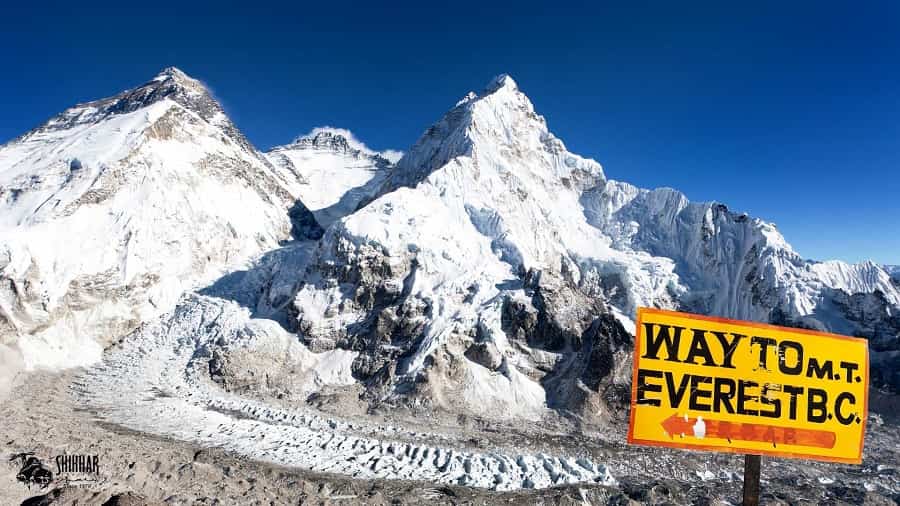
Easier access to trekking in Nepal over years has made the Everest Base Camp Trek, also known as EBC Trek, on the Nepalese side more popular, with an estimated 35000 plus people undertaking this journey every year. Ranked among the top 10 treks in the world by National Geographic Adventure Travel Magazine, the EBC trek offers a walk through villages set against gigantic Himalayan peaks, in valleys dotted with teahouses, Buddhist monasteries and Mani stones. You will witness the Sherpa way of living, experience their hospitality, and get to meet like-minded travelers over delicious local meals in the various teahouses that you stop at overnight. All these factors combined makes the trek to Everest Base Camp an unforgettable bucketlist adventure.
Despite the high altitude, most of the trek is along gradual uphill paths. This allows for steady acclimatization if one does not go too fast, the key to avoiding altitude sickness. The extensive network of teahouses where one can take a break and enjoy a meal also makes the climbs less taxing. It is advisable to give at least 2 days for acclimatization before the trek so that the body can adapt to the sudden change in altitude. Try to avoid alcohol before and during your trek, and make sure you eat lightly and drink plenty of water.
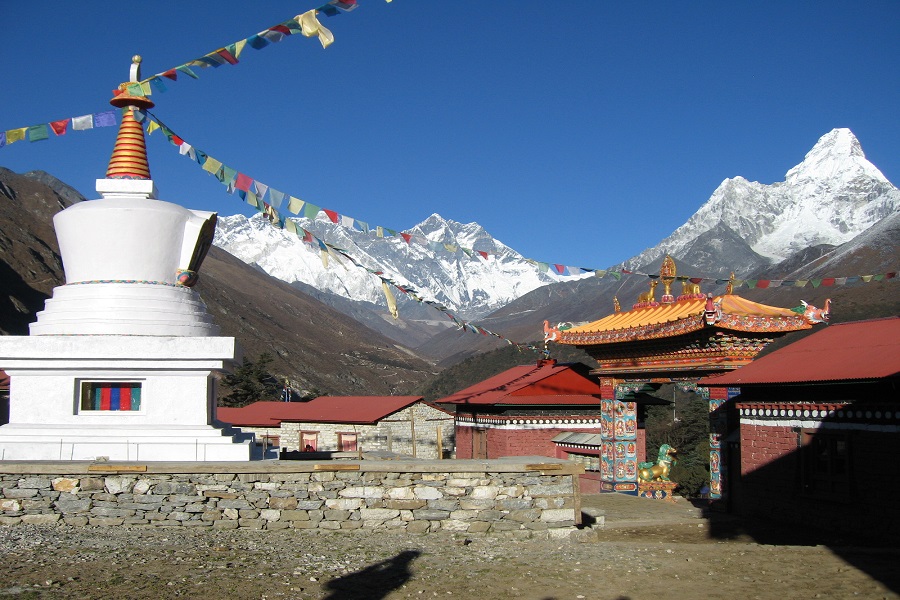
The best times to trek the Khumbu region in Nepal are Spring and Autumn seasons from March to May and September to December. Spring has the flowers, particularly Rhododendrons, in full bloom although visibility may not be the best due to dust coming in from the plains in India. Autumn offers extremely clear views all across but the days are shorter and it is cold early and late in the days.
In the past the trek to Everest Base Camp would take more than 20 days, when trekkers would start their walk from Kathmandu towards Namche Bazar and beyond to the campsite at 5500m. However, infrastructure development in recent years in Kathmandu Valley had allowed travelers to shorten the journey to Everest Base Camp by 2-5 days by starting at Jiri or Lukla. From Kathmandu one can travel on the road to Jiri and by a 30 min flight to Lukla. The route from Lukla is more popular due to shorter duration. In comparison, a start from Jiri provides a trip through beautiful Kathmandu Valley where villages are not merely a cluster of tourist serving guesthouses, thereby providing a more authentic view into local culture. It also helps acclimatize better given the extra few days of walking.
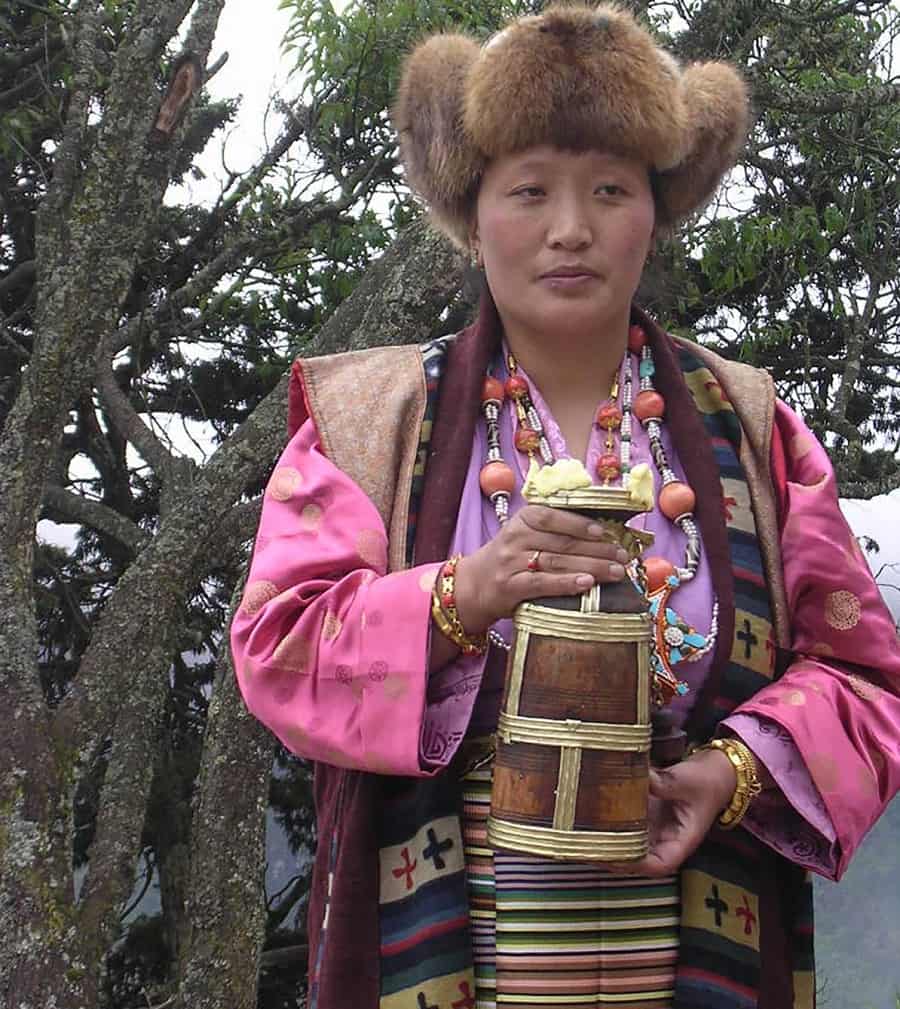
For most people, the trip to Everest Base Camp is not just about walking/hiking amidst the Himalayan giants and the breathtaking scenery. It is also about hardship that must be endured during the journey and the sense of achievement that comes with it. Whatever your cause, this is something to experience before you die. Mount Everest beckons!
- Also Read: Best Mountaineering Expeditions In India
FREQUENTLY ASKED QUESTIONS
Q- Where is Mount Everest and what is its base camp trek?
Mount Everest is located on the border of Nepal and Tibet, and is 8848m high. It has 2 main climbing routes, one in Nepal and the other in Tibet. Both have their own base camp treks, however the one in Nepal is the more famous and more popular. The Everest Base Camp Trek is named so as this journey takes one to the simple campsite at 5500m that serves as a base camp to climbers attempting to scale the peak. Climbers take a break here to rest and acclimatize for several days before starting off for their climb. This reduces the chances and severity of altitude sickness.
Q- How difficult is Everest Base Camp (EBC) trek and who can do it?
Unless you are a seasoned trekker, the EBC trek poses more mental challenges rather than physical ones. Most of the trekking is on level ground with a few steep hillside sections. Therefore, as long as you can walk about 7 km (5 miles) a day without problems, you should do fine. There are no natural terrain hazards like crevasses or rockfalls normally associated with climbing. However, altitude is a factor that you must be careful of. The entire route is above 2000m and by the time you reach the base camp you are at 5500m. Acclimatizing on the route by going slowly is the key to success.
Prepare with cardiovascular exercise 3-4 times a week. Go on 5 hour walks atleast once a week to train your body for continuous walks, preferably with a small backpack.
One must also be careful about the yaks who can unknowingly nudge a trekker off the trail, so always keep on the uphill side when a yak passes by.
Q- How do I reach the start point of this trek?
Since Kathmandu has the only international airport in Nepal, one has to land there when flying into Nepal from overseas. The Everest Base Camp Trek can begin either in Kathmandu or in Lukla. Trekkers usually fly from Kathmandu to Lukla to start the trek save on both time and energy. No roads exist between Kathmandu and Lukla and flying or by foot is the only way to Lukla. The flying time is usually 25 min, but in the rainy season there can be extensive delays of upto a week. Several airlines operate this route daily.
Alternatively, some travelers take the bus from Kathmandu to Jiri, which is about a 5-7 days trekking distance from Lukla. Keep in mind that the duration of the bus ride may vary due to factors such as flat tires, strikes, engines issues, etc. For those who want, taxis can also be arranged for a steep price instead of the bus.
Q- What is the best time to go on this trek?
The best time to trek to the Everest Base Camp is from March to May and from September to December. May can see a few rain showers due to approaching monsoon season. December can be quite cold with sub-zero temperatures but the advantage are uncrowded routes and the still beautiful days.
Both seasons can receive significant snow at higher altitudes at any time, but the chances are higher in fall/Autumn.
Q- How long does it take to do the Everest Base Camp Trek? Are there multiple routes?
The duration of the trek depends on the route followed. Usually trekkers fly from Kathmandu to Lukla and begin their trek there. From Lukla the standard itinerary is 13-15 days long, depending on how quick you walk the route.
- Click here for Everest Base Camp Itinerary & Cost
For those having more time on their hands or wishing to extend the trek, starting from Jiri, an 8 hr bus ride from Kathmandu is an excellent choice. While getting to Jiri on bus or taxi may be somewhat bumpy, this route has fewer trekkers onroute and offers a more complete experience of the hill life in Khumbu region. None of the villages from Jiri to Lukla / Namche are simply conglomerations of lodges servicing trekkers and you will get to witness the real village life in this area. It can take between 5-8 days to trek from Jiri to Lukla / Namche Bazar, depending on how quick you walk. The longer trek also allows better acclimatization by the time one reaches Lukla / Namche. Lastly this route is no more expensive as the extra spending made for a week more trekking is made up by not having to buy the flight tickets from Kathmandu to Lukla.
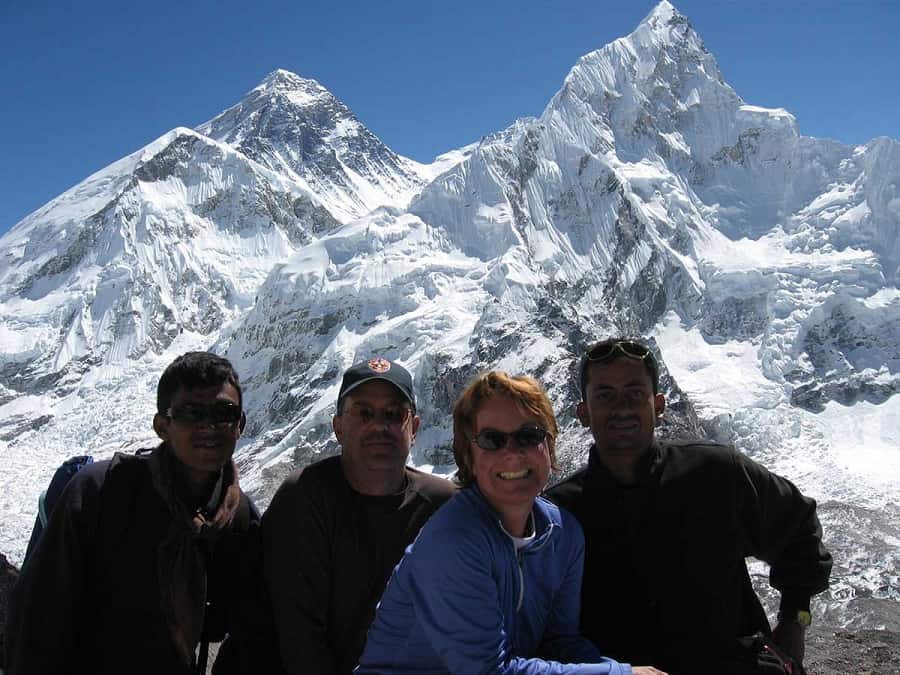
Q- Can I get Nepal tourist visa on arrival? Can I extend my visa?
Citizens of most countries can obtain tourist visa on arrival at Tribhuvan International Airport in Kathmandu. Indians do not require a visa for Nepal. You will need to submit one passport sized photograph, applicable visa fee and the completed visa form. Visa application forms are available in the arrivals hall, though some airlines provide them on the flight. A single entry visa costs as follows:
- Valid for 15 days from date of issue – US$30
- Valid for 30 days from date of issue – US$50
- Valid for 90 days from date of issue – US$125
Visa fees are payable in US dollars. You can change your single entry visa to multiple entry visa for US$20. The 90 day visa includes this fee but ask this explicitly at the time of applying to be sure.
It is a good idea to keep multiple copies of your passport pictures for the purposes of trekking permits, visa extensions and other official documents. Visa extensions can be applied both at the immigration offices in Kathmandu and Pokhara, although the process is quicker at the Pokhara office. The extension fee is US$30 for extending for 15 days or less and US$2 per day for more days. Extending for 30 more days costs US$50. The extension costs are payable in Nepalese Rupee only and are available the same day within a couple of hours. Each application requires your passport, the fees, a picture and the application form that must be filled online.
Note that the total number of days that one can stay in Nepal in one calendar year as a tourist is 150.
- Also Read: Top 10 Highest Mountain Peaks in India
Q- Do I need to take a guide for Everest Base Camp Trek?
From 2014 the government of Nepal requires that all trekkers must have a guide. How strictly this rule is enforced is not clear as there are travelers who just hire porters and prefer to be their own guides. While this is doable in the lower altitude regions, for the Everest Base Camp Trek it is wise to hire a guide. Not only will he be able to explain a lot about the local life and culture, you will be most grateful to have him by your side should you fall ill or in case there is any other emergency.
Contacting a local registered agency is much cheaper than an overseas tour operator. They also help arrange transport, porters, lodge bookings and trekking permits, a tedious task that you are better off giving to someone who has done it countless times. Traveling in a group also provides companionship and a fun environment with other trekkers, an important difference as compared to trekking solo that must not be overlooked due to the mental challenges posed by this trek for non-seasoned trekkers.
Shikhar.com will contact multiple guides for you and provide you the best quotes from several highly rated, officially recognized local trekking operators in Nepal.
What are teahouse accommodations in Nepal? Will I stay in teahouses during EBC trek?
Nepali tea houses that dot the popular trekking trails are guesthouses / lodges where trekkers can grab a meal and sleep for the night. The popular treks such as the EBC trek have teahouses almost all the way with only the remote regions requiring camping under tents. The tea houses serve simple but filling breakfast, lunch and dinner, with tea and snacks available throughout the day for trekkers passing by. The rooms usually sleep 2 people on single beds, with an occasional double bed in some lodges. The beds have clean sheets and a pillow and blankets can be asked for. There is usually no electricity until after dark and no heating outside of winters. Some teahouses also have a dormitory.
There is an open communal room with tables and chairs / benches for trekkers to dine or to just sit and hangout. Cold showers are free and hot showers if available cost a nominal amount. Sometimes your room may have a plug to charge batteries in. At other times you will have to pay to charge them in the communal area. Depending on the teahouse, certain items like toilet paper, sunscreen, lotion, toothpaste, beer and bottled water maybe sold.
Toilets are mostly the “squat over porcelain hole” type, usually located in a separate building disjointed from the teahouse. On rare occasions you may find flush toilets where you will still have to fill water into the tank for flushing.
Luxury guesthouses are also available during certain parts of the trek, with the main differences being the comfort, the service, the food and the prime locations of the lodging. These cost a lot more than the traditional teahouses.
Q- Do I need insurance for travel and trek in Nepal? Can I get it there?
You should certainly buy medical and evacuation insurance for trekking in the high altitude regions in Nepal. Evacuation is done via rescue helicopter in the higher regions, which can be mind bogglingly expensive. So it is best to be insured before you land in Nepal.
Q- How much should I tip my guide and porters?
Tips are expected by the guides, porters and the cooks as a thanking gesture to their efforts and contribution to your trekking trip. The norm is to pay 10-30% of the trekking cost in Nepalese Rupee.
